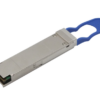【Nexus】Part 2 – 基本操作
今回はNXOSにおける基本操作についてご紹介します。 IOSと比べると基本的に大きな違いはありませんが、細かなコマンドとなるとそれなりに違っています。この記事では基本コマンドを紹介しながらIOSと異なる点についてもコメントしたいと思います。
なおNXOSのコマンドを確認するにはNexus9000vがお手軽です。VMware環境があればいつでもNXOSにアクセスできますので、興味があれば以下の記事にをご参照いただければと思います。
*Nexus9000vシリーズの記事のまとめはこちらから
*Nexus 9000vはversion 9.3(1)を元に動作確認を行っています。
NXOSの基本操作
基本操作
NXOSでは特権モード(enable)はありません。コマンドはユーザごとにRBAC(Role-based access control)で制御する仕組みとなります。デフォルトのadminユーザはnetwork-adminロールがアサインされていて、完全な読み書きが可能です。
conf t (configure terminal)コマンド
User Access Verification
login: admin
Password:
<snip>
switch#
switch# conf t
Enter configuration commands, one per line. End with CNTL/Z.
switch(config)#
showコマンド
コンフィグレーションモードでもIOSのようなdoコマンドを使わなくとも実行可能です。
switch(config)# show run !Command: show running-config !No configuration change since last restart !Time: Tue Nov 26 04:21:48 2019 version 9.3(1) Bios:version <snip> switch(config)#
コンフィグレーション
コンフィグレーションの細かな書き方やデフォルト設定はIOSと比べて変わっているか所が多々あります。上げるときりがないので、大きく異なるのはfeatureコマンドです。主な機能はfeatureコマンドで有効化することでコンフィグレーションが可能となります。
featureコマンド
switch(config)# feature ?
analytics Enable/Disable Analytics!!!
bash-shell Enable/Disable bash-shell
bfd Bfd
bgp Enable/Disable Border Gateway Protocol (BGP)
catena Enable/Disable catena
container-tracker Enable/Disable NXOS Container Tracker
dhcp Enable/Disable DHCP Manager
dot1x Enable/Disable dot1x
eigrp Enable/Disable Enhanced Interior Gateway Routing
Protocol (EIGRP)
evb Enable/Disable Edge Virtual Bridge (EVB)
evmed Enable/Disable Generic event detectors
fabric Enable/Disable Fabric Services
grpc Enable/Disable grpc Services
hsrp Enable/Disable Hot Standby Router Protocol (HSRP)
icam Enable/Disable icam
imp Enable/Disable IMP
interface-vlan Enable/Disable interface vlan
isis Enable/Disable IS-IS Unicast Routing Protocol (IS-IS)
itd Enable/Disable ITD
lacp Enable/Disable LACP
ldap Enable/Disable ldap
lldp Enable/Disable LLDP
<snip>
switch(config)#
ファイルの操作
IOSと比べるてあまり変わりはありませんが、スタートアップコンフィグ削除についてはwrite eraseはあるものの、コンフィグの保存の際のwrite memoryコマンドがありません。
現在のコンフィグの確認
switch# show running-config
スタートアップコンフィグの確認
switch# show startup-config
スタートアップコンフィグへの保存
switch# copy running-config startup-config
スタートアップコンフィグコンフィグの削除
switch# write erase
※ドキュメントに以下の注意書きがあるので、機器によっては"write erase"でもmgmtのコンフィグが残るのかもしれません(Nexus9000vはwrite eraseでmgmt0も初期化)。
The write erase command erases the entire startup configuration, except for the following:
To remove the boot variable definitions and the IPv4/IPv6 configuration on the mgmt0 interface, use the write erase boot command. To remove all application persistency files such as patch rpms, third party rpms, application configuration in /etc directory other than configuration, use 'install reset’. This command was added as of the 7.0(3)I6(1) release.
コンフィグファイルのリモート サーバへのコピー – tftp
コマンド入力後のダイアログで、mgmtインタフェース経由のtftpサーバへのアクセスだと、vrfを「management」と入力する必要があります
switch# copy running-config tftp://192.168.1.29/
Enter destination filename: [switch-running-config]
Enter vrf (If no input, current vrf 'default' is considered): management
Trying to connect to tftp server……
Connection to Server Established.
TFTP put operation was successful
Copy complete, now saving to disk (please wait)…
Copy complete.
switch#
コンフィグファイルのリモート サーバへのコピー – ftp
コマンド入力後のダイアログで、mgmtインタフェース経由のtftpサーバへのアクセスだと、vrfを「management」と入力する必要があります
switch# copy running-config ftp://192.168.1.29/home/user/
Enter destination filename: [switch-running-config]
Enter vrf (If no input, current vrf 'default' is considered): management
Enter username: user
Password:
Transfer of file Completed Successfully
Copy complete, now saving to disk (please wait)…
Copy complete.
switch#
コンフィグファイルの内部デバイスへのコピー
switch# copy running-config bootflash:
Enter destination filename: [switch-running-config]
Copy complete, now saving to disk (please wait)…
Copy complete.
switch#
switch# dir
<snip>
4410 Sep 15 01:39:35 2019 switch-running-config
<snip>
switch#
ディレクトリの確認
switch# dir
4096 Nov 21 09:10:39 2019 .rpmstore/
4096 Nov 21 09:11:15 2019 .swtam/
503 Nov 21 09:12:53 2019 20191121_091237_poap_960_init.log
13685 Nov 21 09:18:43 2019 20191121_091633_poap_2828_init.log
1413271552 Jul 19 00:39:10 2019 nxos.9.3.1.bin
0 Nov 21 09:20:25 2019 platform-sdk.cmd
4096 Nov 21 09:12:34 2019 scripts/
4096 Nov 21 09:17:38 2019 virt_strg_pool_bf_vdc_1/
4096 Nov 21 09:15:47 2019 virtual-instance/
59 Nov 21 09:15:38 2019 virtual-instance.conf
Usage for bootflash://
1597685760 bytes used
1872424960 bytes free
3470110720 bytes total
switch#
コンフィグの復旧
先ほど保存した、bootflash上のswitch-running-configというコンフィグファイルから復旧する例
1. write erase
2. reload
3. copy bootflash:switch-running-config running-configuration
4. copy running-config startup-config
参考URL
Cisco Nexus 9000 Series NX-OS Fundamentals Configuration Guide, Release 9.3(x)









